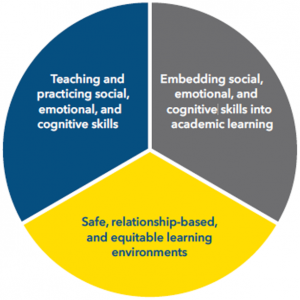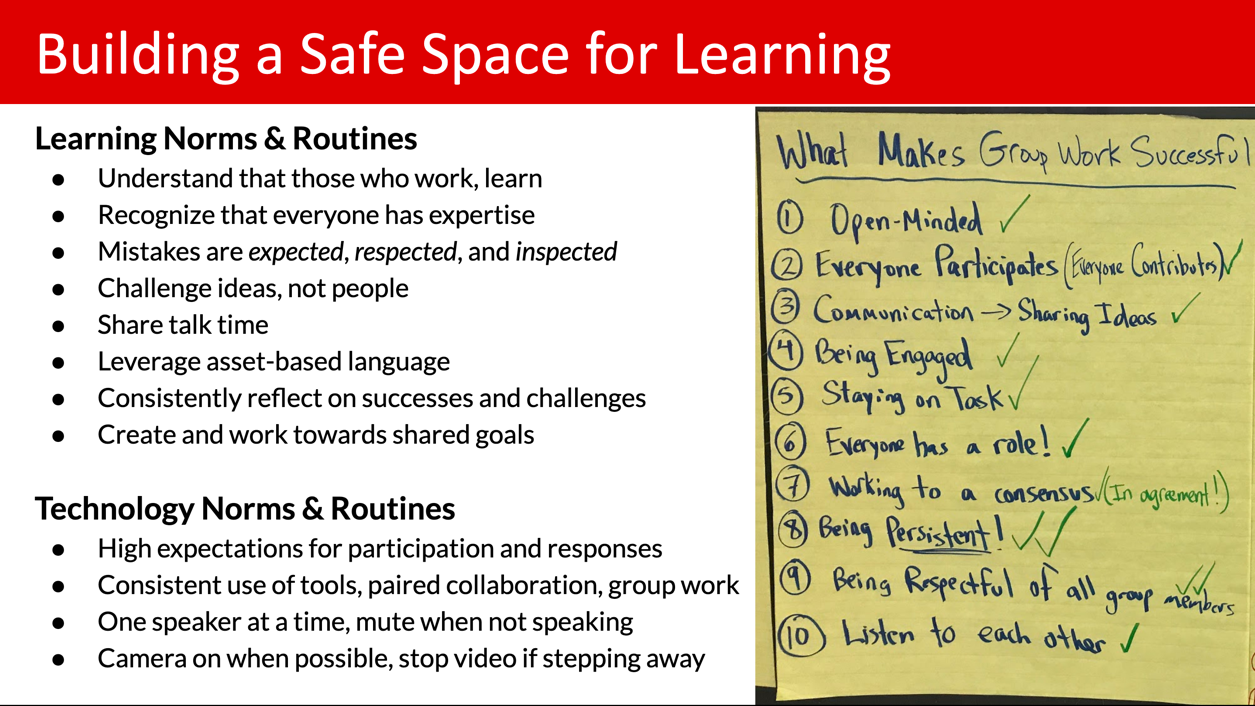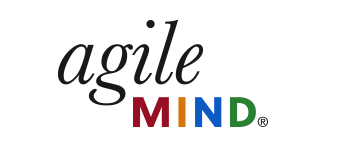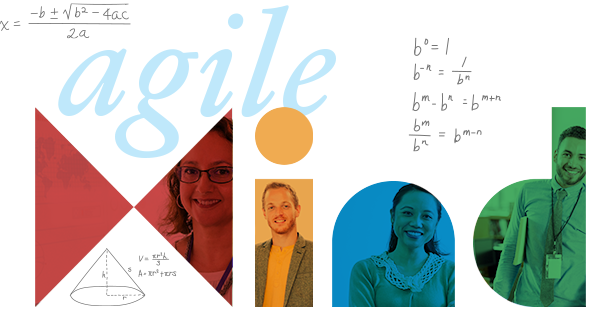For educators and education systems, it is critical to support students’ capability, purpose, and sense of belonging in school—now more than ever. Communities, schools, and families are working through extraordinary challenges to create opportunities to learn—for both educators and students. Despite setbacks and rapidly evolving circumstances, they continue to create meaningful connections and learning experiences.
Students learn best when they are ready to learn—when they are relatively free of stress and anxiety, when they feel connected to their teacher, when they are part of a community and invested in its work, and when they know and understand what is expected of them. Creating those conditions presents entirely new challenges this year, but educators across the nation will attest that it can be done. And the work to do so has revealed that—while we confront new conditions, demands, and tools—best practices for teaching and learning remain.
Here we highlight key strategies shared by educators and experts that support students’ social, emotional, and academic development in 2020-2021:

The Aspen Institute, 2019
Integrate students’ social and emotional learning with academic work
SEAD describes the integration of social and emotional learning competencies and skills with academic learning. SEL skills can be explicitly taught and practiced. Integrating this work with academic learning helps students internalize and generalize new competencies to learning experiences across their school day and has significant positive impacts on the culture and climate of learning.
Create a strong culture of learning from the start
School is a safe, stimulating place for so many students. Amid disruptions and distance learning efforts, many districts have prioritized work to intentionally build safe learning spaces at the start of the year. Even remotely, teachers are applying strategies that help build a culture where each student has a voice, where everyone is valued, and where mistakes are expected, respected, and inspected.
A strong learning environment welcomes students into the community, promotes effective mindsets for learning, and gives students tools to manage their learning. When students feel they belong, believe in their ability to learn, and are equipped with effective problem-solving strategies, they work harder, persist longer, and achieve at higher levels.
Focus on equity
When equity is prioritized, we start with the expectation that everybody brings something to the table, everyone has value, and everyone belongs. Many educators are applying an equity lens to their teaching. They are learning how culturally responsive practices support high-quality instruction, and how strategies they may already use—such as posing purposeful questions and managing students’ productive struggle—enhance access to learning for all.
This year, of particular concern for the start of school are challenges with equitable access to technology. We see educators, families, and communities making exceptional efforts to serve students, yet many still face barriers. For remote learning, many teachers are leveraging technology to facilitate effective synchronous (live) sessions. However, students with limited access to technology can benefit from meaningful asynchronous (not time-specific) learning experiences to be completed independently, with windows of time available for individual or small-group support.
Develop and apply norms and routines
Though the work to develop and consistently use norms and routines might not seem transformative, it is essential for establishing and deepening positive, equitable learning environments. Routines and norms promote meaningful and respectful discourse that is organized around students’ shared work, and help teachers build safe spaces for learning.
Teachers have always valued norms, but this year they are particularly important. Most students have been away from school for an extended period, and in the beginning of the year, teachers and students may not be learning in the same place at the same time. Many educators are leveraging two types of norms: norms for establishing and managing a supportive community of learners and norms for using technology in remote or hybrid learning models. Establishing both sets of norms increases the likelihood that all students will engage and fully participate in their learning experiences.

Engage educators in the practices expected of students
The most effective professional development—particularly this year—both engages educators in learning that develops their capacity and also models effective practices they can bring to their roles. Teachers can more easily and rapidly apply new practices when they have experienced them in their own learning—whether for prompting and managing collaboration and discourse, developing and applying effective norms and routines, using roles in collaboration, or introducing, managing, and debriefing tasks and group work.
This year, Agile Mind’s teachers have benefitted from professional learning experiences that model best practices for remote learning, including how to build a welcoming, positive culture of learning when you’re not physically together, how to organize and manage students’ work individually and in groups, and how to leverage various technology and collaboration tools.
Finally, like students, educators can develop their learning mindsets. Teachers’ beliefs in students’ capacity are critical and can deeply impact students’ beliefs about themselves and their ability to learn. When so much is uncertain, we must ensure that all students know that the adults they encounter believe in their potential.
For information about how SEAD work is done programmatically, visit our Academic Youth Development (AYD) page.
For related information, visit:
- “Integrating Social, Emotional and Academic Development: An Action Guide for School Leadership Teams” — The Aspen Institute, 2019
- Reunite, Renew and Thrive: SEL Roadmap for Reopening School — The Collaborative for Academic, Social, and Emotional Learning (CASEL), 2020
- The Mo(ve)ment to Prioritize Antiracist Mathematics: Planning for This and Every School Year — TODOS: Mathematics for ALL, 2020



